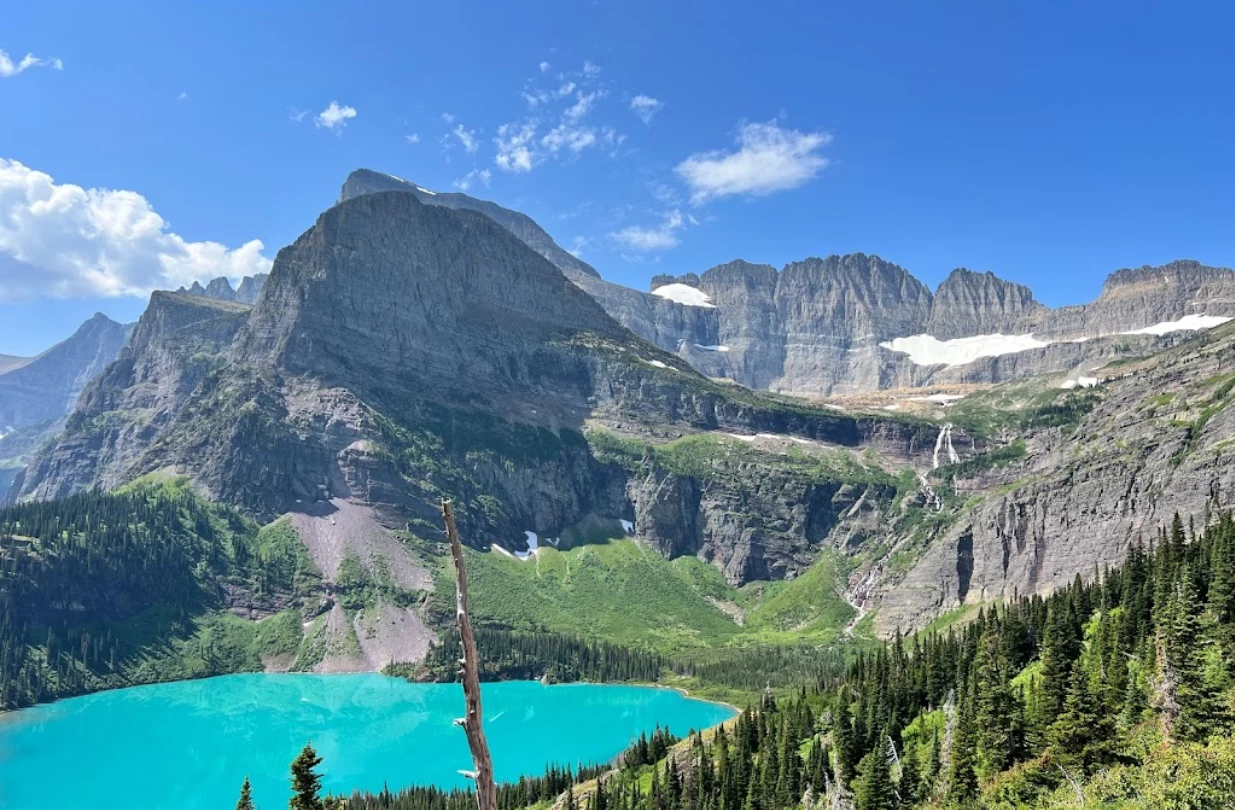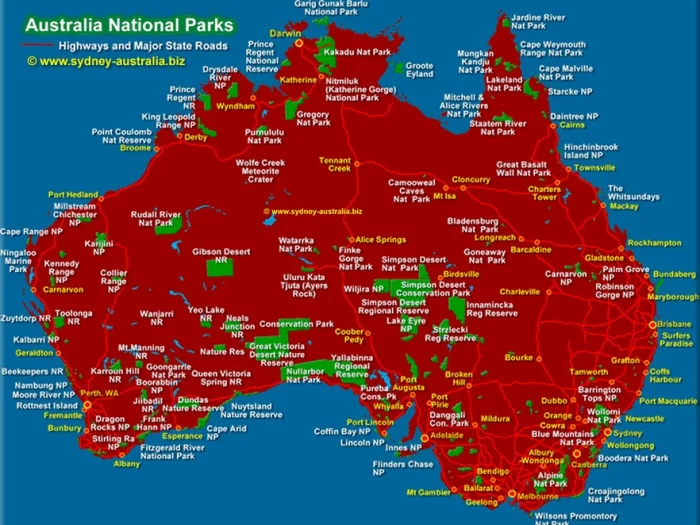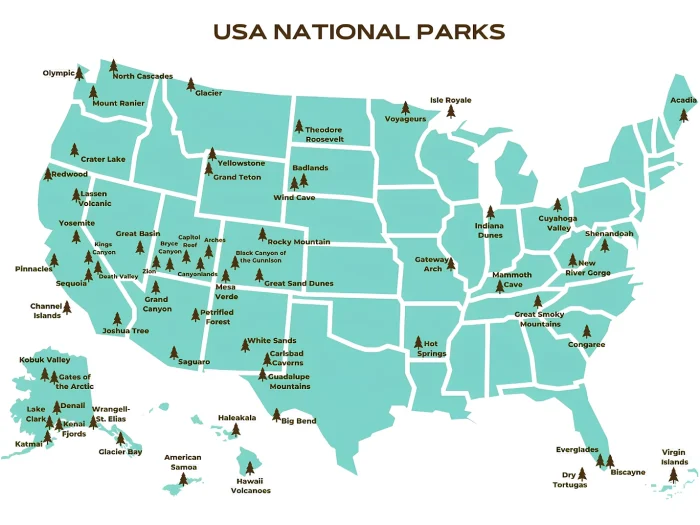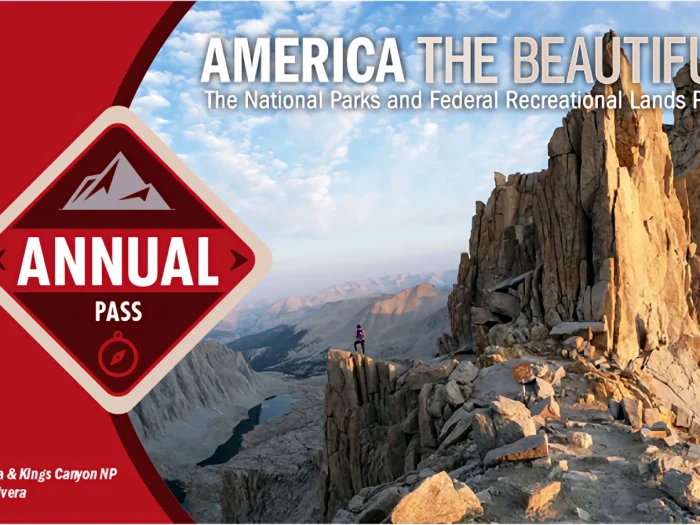10 Best National Parks for Summer in US
Summer is one of the best times to explore U.S national parks, offering warm weather, long daylight hours, and access to many of the parks’ natural wonders.
Here is 10 best National Parks for Summer in US
1. Yosemite National Park, California
Features: Yosemite is renowned for its breathtaking granite cliffs, including El Capitan and Half Dome, and its stunning waterfalls such as Yosemite Falls and Bridalveil Fall. The park is also home to ancient giant sequoias in the Mariposa Grove.
Flora and Fauna: Yosemite is rich in biodiversity, with black bears, mule deer, and a wide variety of birds. The park’s meadows and forests are filled with wildflowers in the summer.
Must-See Spots: Glacier Point offers panoramic views of Yosemite Valley, Half Dome, and the High Sierra. Tuolumne Meadows is a serene high-country meadow area, ideal for those seeking solitude and scenic beauty.
Tips: Summer is peak season, so it’s wise to make reservations well in advance. Consider visiting lesser-known areas like Hetch Hetchy Valley for a quieter experience.
2. Glacier National Park, Montana

Features: Known as the “Crown of the Continent,” Glacier National Park is famous for its rugged mountains, pristine lakes, and glaciers. The Going-to-the-Sun Road, a 50-mile scenic drive, is a must-do, offering breathtaking views of the park’s peaks and valleys.
Flora and Fauna: The park is home to a diverse array of wildlife, including grizzly bears, mountain goats, and moose. The park’s wildflower season peaks in July and August, painting the meadows with color.
Must-See Spots: Lake McDonald, the largest lake in the park, is a stunning spot for photography and relaxation. Grinnell Glacier offers one of the most iconic hikes in the park, providing views of a receding glacier.
Tips: Due to the park’s popularity, the Going-to-the-Sun Road can get crowded. Consider exploring less visited areas like Two Medicine or Many Glacier for a more peaceful experience.
3. Acadia National Park, Maine
Features: Acadia is a blend of coastal beauty and rugged mountains. Cadillac Mountain, the highest point on the U.S. Atlantic coast, offers spectacular sunrise views. The park’s coastline is dotted with picturesque lighthouses and rocky cliffs.
Flora and Fauna: Acadia is known for its dense forests of pine, birch, and maple. The park is home to various wildlife, including white-tailed deer, red foxes, and peregrine falcons.
Must-See Spots: Jordan Pond, with its clear waters and views of the Bubbles (two rounded hills), is a favorite spot for visitors. The Carriage Roads, built by John D. Rockefeller Jr., offer miles of scenic biking and walking paths.
Tips: The park’s small size means it can get crowded in summer. Visiting early in the morning or late in the evening can help you avoid the busiest times.
4. Yellowstone National Park, Wyoming/Montana/Idaho
Features: Yellowstone, the first national park in the world, is famous for its geothermal features, including geysers, hot springs, mud pots, and fumaroles. Old Faithful is the most famous geyser, known for its regular eruptions.
Flora and Fauna: The park is a haven for wildlife enthusiasts, with opportunities to see bison, elk, wolves, and grizzly bears. The Lamar Valley is often called “America’s Serengeti” due to its abundant wildlife.
Must-See Spots: The Grand Prismatic Spring, with its vibrant colors, is one of the most photographed spots in the park. The Yellowstone Grand Canyon, with its stunning waterfalls and colorful rock formations, is another highlight.
Tips: Summer brings crowds, so plan to arrive early at popular spots. Consider visiting the less crowded northern loop or taking a guided tour to learn more about the park’s geology and wildlife.
5. Grand Teton National Park, Wyoming
Features: Grand Teton National Park is known for its dramatic mountain scenery, with the Teton Range rising abruptly from the plains. The park’s numerous lakes, such as Jenny Lake and Jackson Lake, offer serene settings for reflection and recreation.
Flora and Fauna: The park is rich in wildlife, including moose, elk, and black bears. The park’s wetlands and meadows are also important habitats for birds like bald eagles and trumpeter swans.
Must-See Spots: The Jenny Lake Scenic Drive offers stunning views of the Tetons, and the hike to Hidden Falls and Inspiration Point is a must-do. For photographers, Oxbow Bend is a prime location for capturing reflections of the Tetons in the Snake River.
Tips: Grand Teton is less crowded than nearby Yellowstone, but still busy in summer. Early morning or late evening visits can provide solitude and the best light for photography.
6. Rocky Mountain National Park, Colorado
Features: This park is famous for its high-altitude landscapes, with 77 mountain peaks over 12,000 feet. The Trail Ridge Road, one of the highest paved roads in the U.S., offers stunning views of the alpine tundra.
Flora and Fauna: The park is home to a wide range of wildlife, including elk, bighorn sheep, and marmots. The subalpine forests are filled with spruce, fir, and aspen trees, and the wildflowers are in full bloom during the summer.
Must-See Spots: Bear Lake, a beautiful glacially-formed lake, is a popular spot for both hiking and photography. The hike to Emerald Lake offers breathtaking views of the surrounding mountains.
Tips: The park’s high elevation means weather can change rapidly, even in summer. Be prepared for afternoon thunderstorms, and start hikes early to avoid them.
7. Olympic National Park, Washington
Features: Olympic National Park is unique for its diversity, with ecosystems ranging from temperate rainforests to alpine peaks and rugged coastlines. The Hoh Rain Forest, one of the few temperate rainforests in the U.S., is a highlight with its lush, moss-covered trees.
Flora and Fauna: The park is home to a variety of wildlife, including Roosevelt elk, black bears, and bald eagles. The tide pools along the coast are teeming with marine life like sea stars and anemones.
Must-See Spots: Hurricane Ridge offers panoramic views of the Olympic Mountains and is a great spot for summer wildflower viewing. The Sol Duc Hot Springs provide a relaxing experience after a day of hiking.
Tips: The park’s diverse environments mean you can experience different weather conditions in one day. Plan for both rain and sun, and don’t miss the coastal areas, which are less crowded than the interior.
8. Zion National Park, Utah
Features: Zion is known for its dramatic red cliffs and narrow slot canyons. The park’s main attraction is Zion Canyon, carved by the Virgin River, which offers some of the most iconic hikes in the U.S., including Angels Landing and The Narrows.
Flora and Fauna: Zion’s lower elevations are home to desert plants like cacti and yucca, while higher areas support pinyon pines and junipers. Wildlife includes mule deer, rock squirrels, and a variety of reptiles.
Must-See Spots: Angels Landing offers a challenging hike with stunning views from the top, while The Narrows provides a unique experience of hiking through a river within a deep slot canyon.
Tips: Summer temperatures can soar above 100°F, so start hikes early and bring plenty of water. The park’s shuttle system helps reduce traffic in the main canyon, making it easier to get around.
9. Denali National Park, Alaska
Features: Denali National Park is centered around Denali, North America’s tallest peak. The park’s vast wilderness is largely untouched, offering visitors a true sense of solitude and the opportunity to explore rugged landscapes.
Flora and Fauna: Denali is a wildlife haven, with chances to see grizzly bears, caribou, wolves, and Dall sheep. The park’s tundra is also home to a variety of wildflowers that bloom during the short summer season.
Must-See Spots: The Denali Park Road offers the best access to the park’s interior, with bus tours available to take you deep into the wilderness. Wonder Lake is another must-see spot, providing stunning reflections of Denali on clear days.
Tips: The park’s weather can be unpredictable, so pack layers. Wildlife is most active early in the morning and late in the evening, so plan accordingly.
10. Great Smoky Mountains National Park, Tennessee/North Carolina
Features: The Great Smoky Mountains are famous for their mist-covered peaks and lush, diverse forests. The park is also rich in cultural history, with preserved homesteads, mills, and churches that provide a glimpse into Appalachian life.
Flora and Fauna: The park is one of the most biodiverse in the U.S., home to over 19,000 documented species. Wildlife includes black bears, white-tailed deer, and a variety of salamanders, for which the park is known.
Must-See Spots: Clingmans




